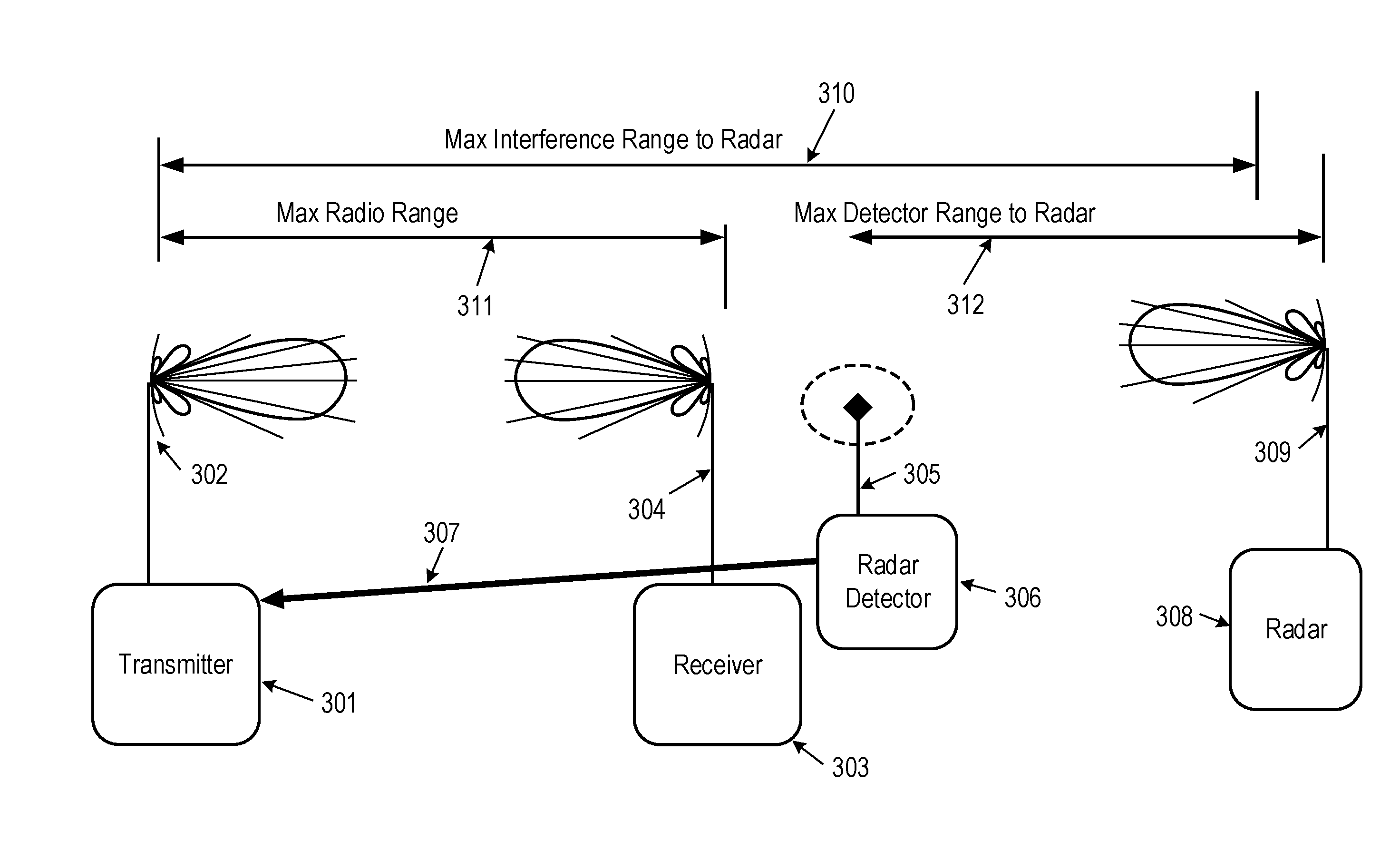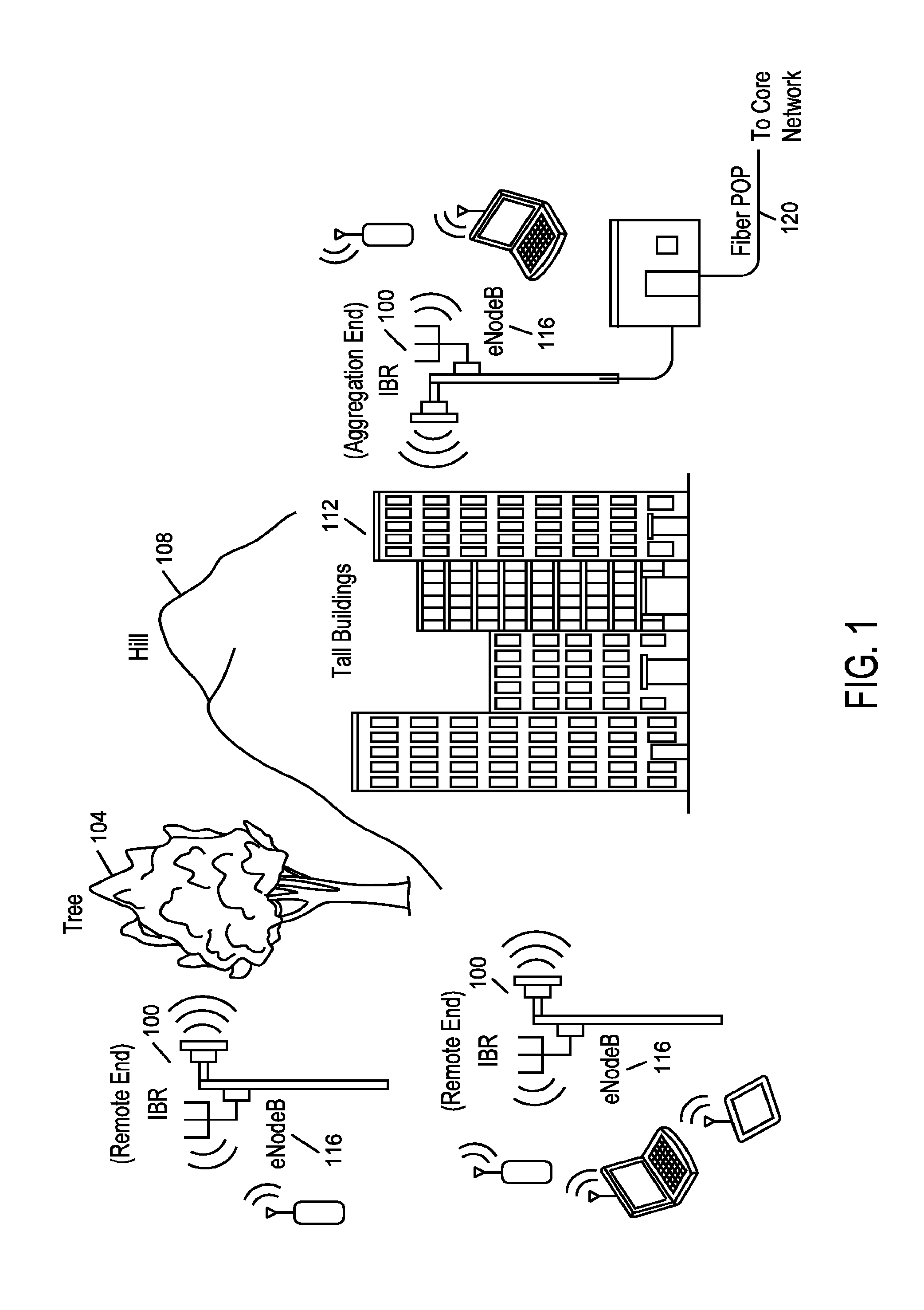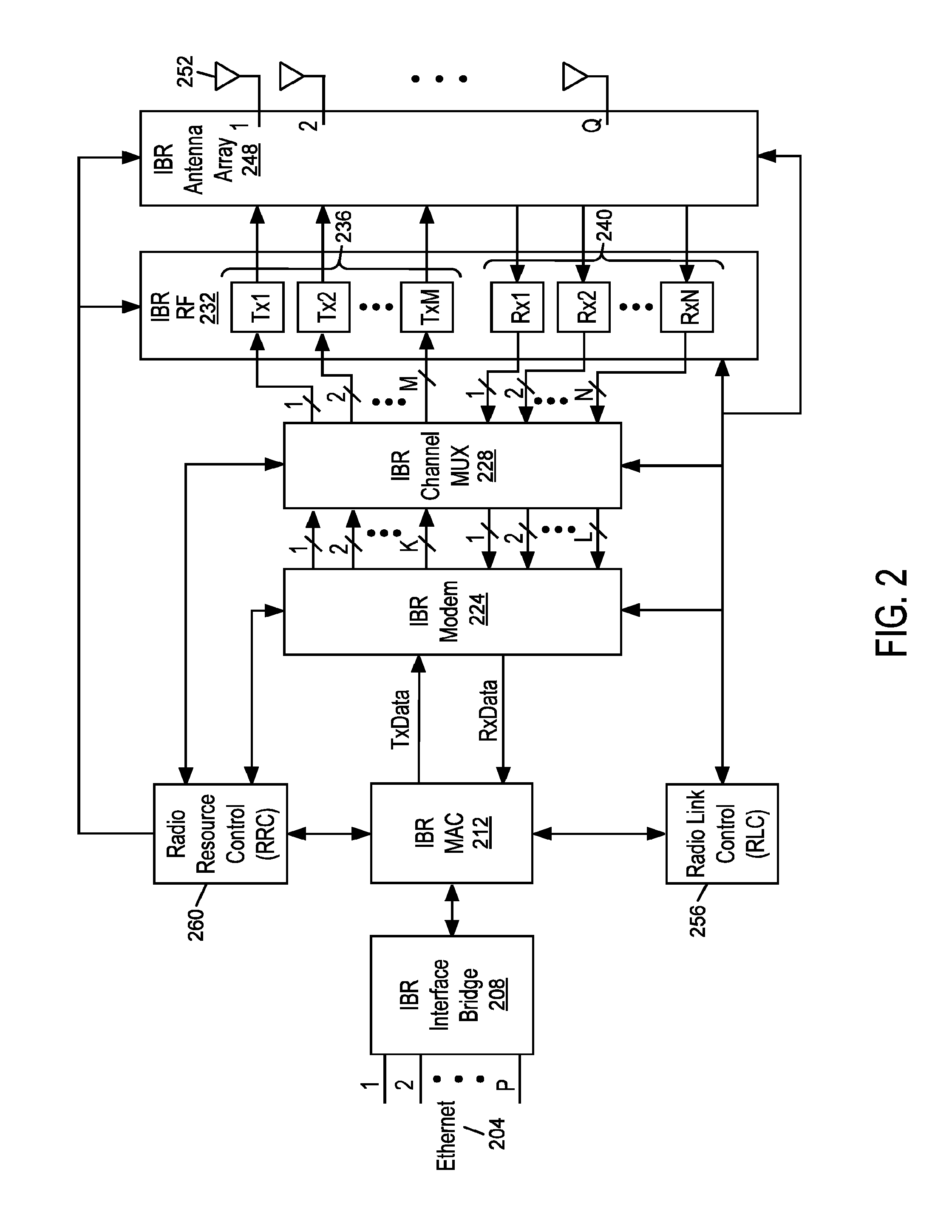Radio with oobe victim detection
a technology of victim detection and radio, applied in the field of data networking, can solve the problems of radio interference with the radar, inability to reliably, and noise floor of about 96 dbm, and achieve the effect of long rang
- Summary
- Abstract
- Description
- Claims
- Application Information
AI Technical Summary
Benefits of technology
Problems solved by technology
Method used
Image
Examples
Embodiment Construction
[0180]In a radio system that can have multiple radar detectors, such as a point-to-multipoint and other configurations in the array of backhaul networks, the radar detectors become a shared network resource. Embodiments of the invention make use of the shared resource by operating these detectors cooperatively, or in a coordinated manner, to perform the radar detection function efficiently and provide expanded capability such as channel look ahead, extended detection bandwidth, and more reliable detectability through location, angle, and antenna diversity.
[0181]Embodiments of the invention perform radar detection at the receiver side for the transmitter that occupies the channel at the same time the transmitter is sending. In some embodiments of the invention, the detector relays the results over a separate communications channel. This separate communications channel may be the part of an FDD link that operates in the other direction. The communication may also be indirect. For exam...
PUM
 Login to View More
Login to View More Abstract
Description
Claims
Application Information
 Login to View More
Login to View More - R&D
- Intellectual Property
- Life Sciences
- Materials
- Tech Scout
- Unparalleled Data Quality
- Higher Quality Content
- 60% Fewer Hallucinations
Browse by: Latest US Patents, China's latest patents, Technical Efficacy Thesaurus, Application Domain, Technology Topic, Popular Technical Reports.
© 2025 PatSnap. All rights reserved.Legal|Privacy policy|Modern Slavery Act Transparency Statement|Sitemap|About US| Contact US: help@patsnap.com



